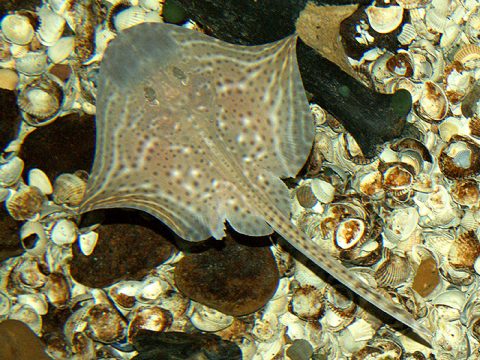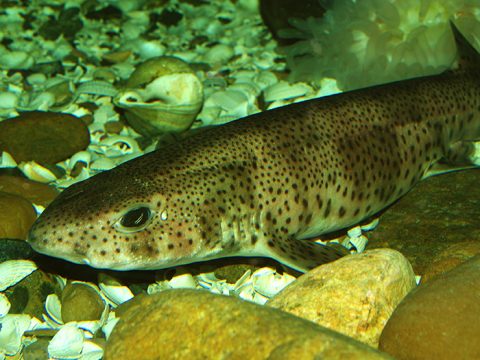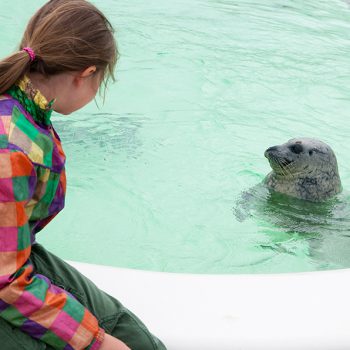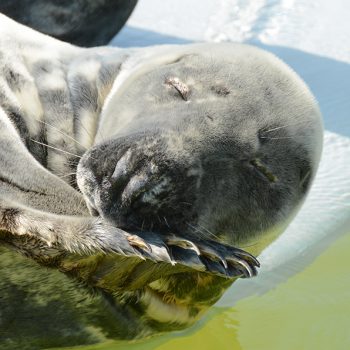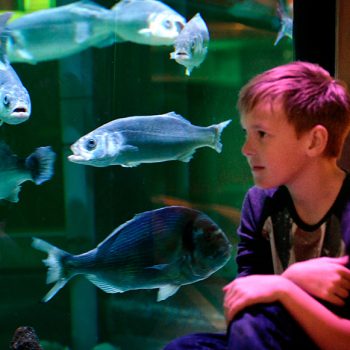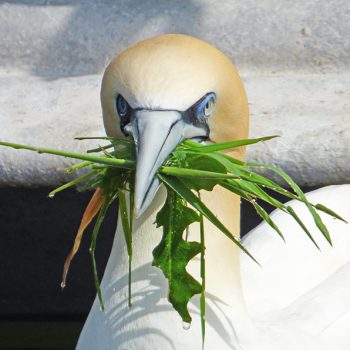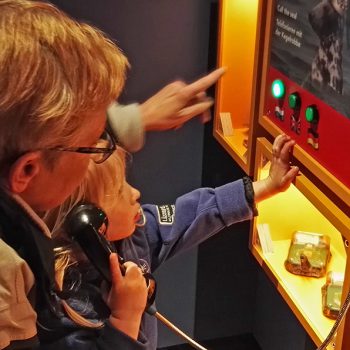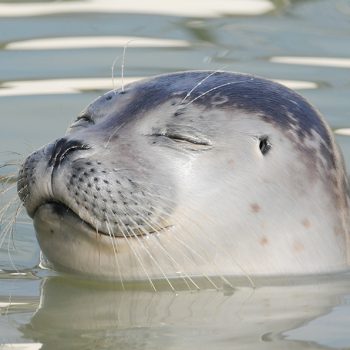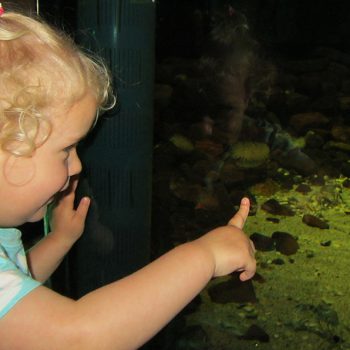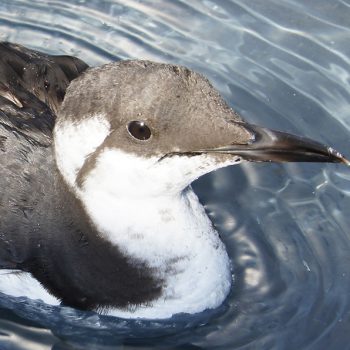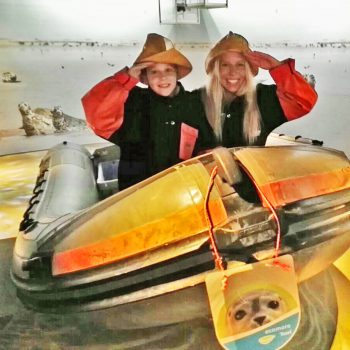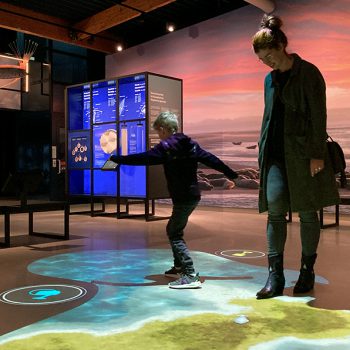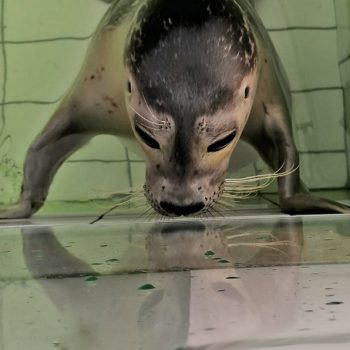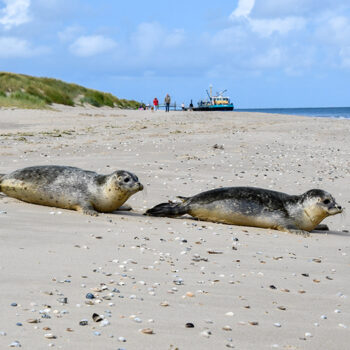Sea fish
There are around 220 species of fish living in the North Sea. Each species has its specific way of living. For instance, herring and mackerel eat plankton and are often found just under the sea surface. Sole, plaice and most species of sharks and rays live on the bottom, where they hunt benthic animals such as worms, crabs and shrimp. Then you have the real predators: fish that hunt other fish, such as cod and sea-bass.
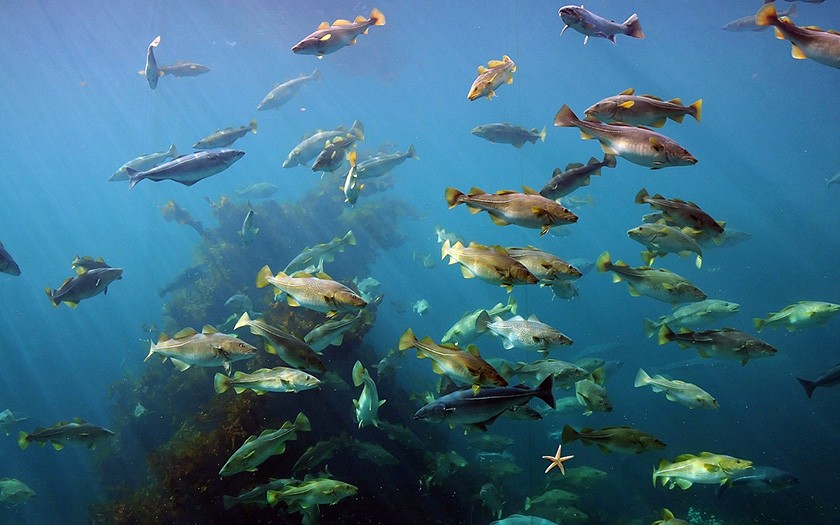
Sea fish: a life under water
All fish swim, however not in the same way. Stayers such as mackerel, herring and sprat, can swim fast for a fairly long time. Cod, haddock, sole and plaice are sprinters: they swim quickly for a short period of time. This difference is easy to see in the muscles. The muscles of stayers are red, a sign of good circulation with lots of oxygen. Sprinters have white muscles and are quickly exhausted.
Herring, mackerel and sprat are surface feeders and live in the upper water column, usually in large schools. Their food consists of plankton or small fish. These ‘open water’ fish are called pelagic fish. They often have a camouflage color in order not to be too conspicuous for their enemies: a green-blue back and a silver-white belly. This makes it difficult for seabirds looking down into a green-blue water surface to distinguish them, and for other predator fish to see them when looking up against the bright light above. They swim in schools because they are better protected against predator fish and because it costs them less energy. A fish makes use of the turbulence in the water current induced by those swimming ahead.
Benthic fish, such as plaice and sole, live on the sea floor and eat benthic animals and small species of fish. For better camouflage, they often develop a color pattern similar to the seabed where they reside. Turbot are even able to change their color to fit in with the surroundings. Benthic fish will dig themselves into the upper layer of sand.
Predator fish feed on smaller fish. They hunt near the bottom (cod and haddock) as well as close to the water surface (garfish, European sea-bass and whiting). They are well equipped for their role as predator, being fast swimmers with a large mouth and often sharp teeth slanting backward.
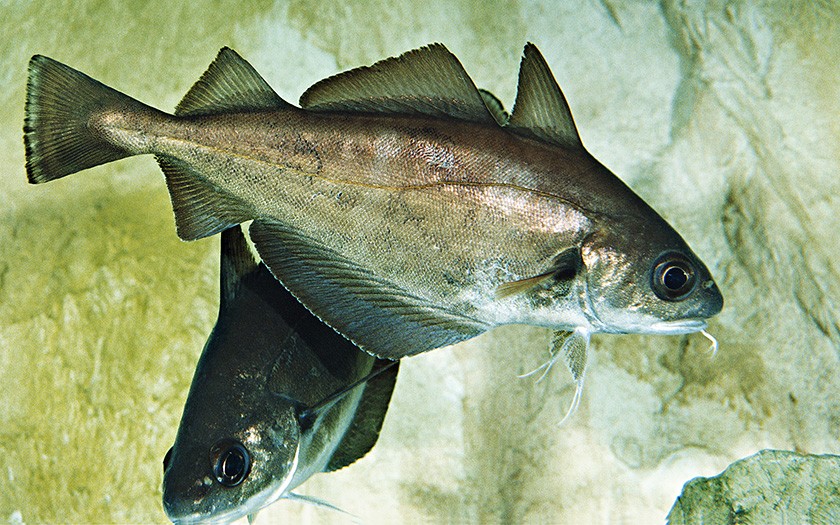
Reproduction of sea fish
Fish often lay many eggs, especially those species whose eggs drift around in the water. Cod lay up to a million eggs per year. Most of the fish eggs and larvae are consumed by other animals. The eggs of species such as herring and lesser sandeel are laid on the sea floor. These eggs are less vulnerable, so that the fish can afford to lay fewer eggs. Herring produces ‘only’ 30,000 eggs per year. Other species, such as the lesser spotted dogfish and the thornback ray, lay even fewer eggs, around 140.
Fish have preferences for where they reproduction. Herring release their eggs (roe) on gravel or shell banks, as found along the English and Scottish coasts. After the males fertilize the eggs with seed (milt), the adult fish return to the northern and central North Sea. Lesser sandeel lay their eggs in sand.
Eggs and larvae from herring, cod, flatfish and many other species belong to the zooplankton. They live in the upper water layers of the sea and eat mainly copepods. Only when they grow larger are they able to move around independent of the sea currents. At this stage, they no longer are considered plankton. Species such as herring and sprat start eating plankton themselves. It’s not strange for them to eat the larvae of their own species.
Sea fish spawning grounds and nurseries
The place where females release eggs and the males fertilize them is called the spawning grounds. Fish larvae grow best in seas with large amounts of nutrients: the nurseries. Spawning grounds are situated in such a way that eggs and larvae are easily transported to the nursery grounds. The difference in good and bad year classes of fish is often ascribed to changes in current patterns. Coastal waters, particularly the Wadden Sea, are very important as nursery or spawning ground for a number of fish species found in the North Sea. Herring, lesser sandeel, cod and plaice spawn a far distance away from the coast. All of their nurseries lay directly off the coast and in the Wadden Sea.
Sea fish: eat and be eaten
Fish are not the only animals living in the North Sea. There is an enormous variety of plants and animals in sea. All life in the sea is dependent upon one another: the one is food for the other. Phytoplankton forms the base for most life in sea. Phytoplankton are consumed by zooplankton, such as copepods and the larvae of benthic animals and fish. Zooplankton are eaten by all kinds of benthic animals and small fish, such as herring and sprat, and in turn, they are on the menu for larger fish, such as cod and haddock. Fish fall prey to seabirds, marine mammals and people.
This system of eat and be eaten is called the food chain. In reality, it is much more complicated than described here. Phytoplankton will eat each other: for example, fish larvae eat copepods. In addition, young fish eat different prey than adult fish.
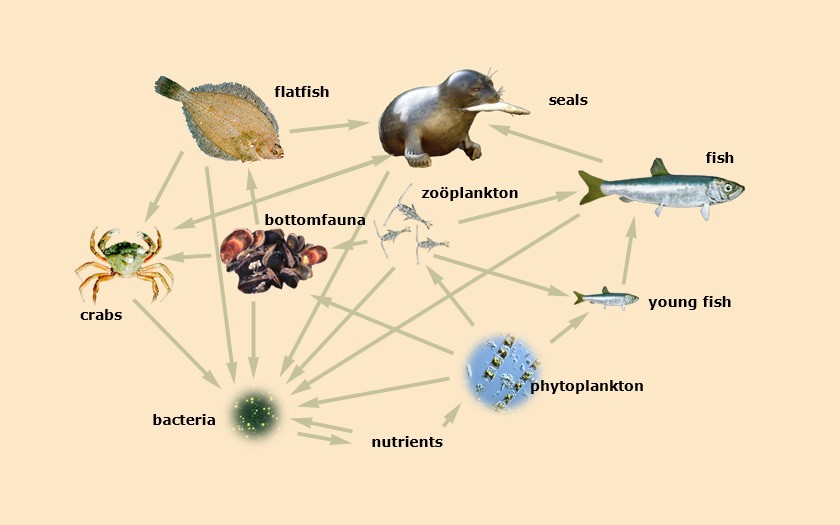
People and fish
Humans exercise the greatest impact on sea fish due to the sea fisheries. By catching predator fish such as cod, the chances for their prey (herring) increases. However, rare species which are commercially uninteresting also suffer from the fisheries. Several species of rays and sharks have practically disappeared from the North Sea because they are accidentally caught in fishing nets. Poorly managed fish stocks have declined enormously in the past 50 years. Examples are bluefin tuna and swordfish. In the North Sea, herring and sole have incurred major problems. Strict catch agreements have led to recovery. That hasn’t yet happened with cod.
A greater supply of nutrients, especially in the coastal waters and tidal regions, has also had major influence on the fish populations. On the one hand, it can be favorable: more nutrients mean more plankton and therefore more young fish which grow quickly. However, after a large scale algal bloom, the fish fauna in a particular region can run into problems from an oxygen deficiency. Polluting the seawater with a multitude of toxins is also detrimental. Fish larvae do not survive an oil disaster or an excess of pesticides, and adult fish become extremely sick from toxins.
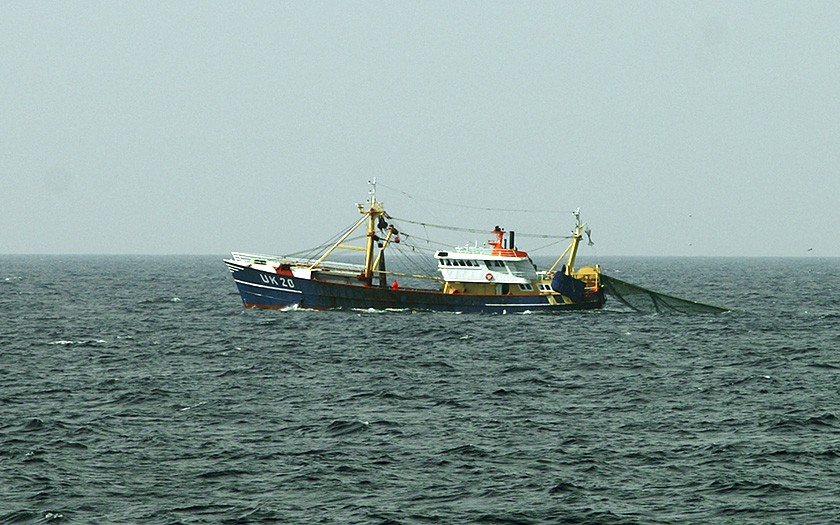
Facts about sea fish
- number of species worldwide: more than 20,000
- number of species in the North Sea: more than 220
- largest North Sea fish species:
basking shark, maximum 15 meters long, 15,000 kilograms - smallest North Sea fish species: gobies (as big as shrimp)
- enemies: all fish consumers, people (fisheries, pollution, acoustic pollution), diseases
- food: plankton, benthic fauna, crustaceans, coelenterates and other fish


